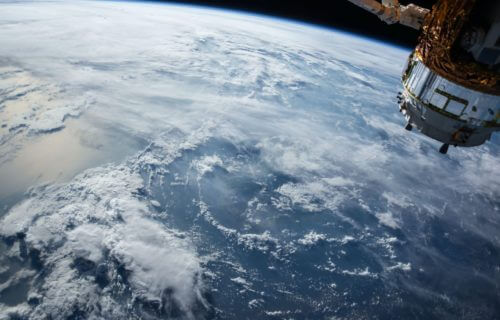ARLINGTON, Texas — Nothing is more frustrating than your weather app telling you it’s going to be sunny and gorgeous outside only for it to start raining two hours later. Meteorologists do their best to predict weather trends and patterns, but there’s always room for error. However, researchers in Texas say data collected from NASA could help improve those sometimes-unreliable weather predictions.
Yu Zhang, an associate professor in the department of civil engineering at the University of Texas at Arlington, secured a NASA grant to use data on ocean circulation, atmospheric conditions, and current weather information to make longer-range forecasting more reliable. Beyond planning out your day ahead, there are many important benefits to having an accurate read on the weather. State officials could make better decisions about when to release water from reservoirs, for example, if they knew ahead of time of an impending drought or flood.
“Using NASA data, we want to increase the accuracy of forecasts for extreme wet and dry conditions,” Zhang explains in a university release. “It takes two to three weeks for water released from reservoirs to travel from North Texas to the coast. Reservoir operators have to take that into account when releasing water up here because it has an impact south of us. We will determine if the data we have available can help us predict those events. We have to have a better forecast lead time.”

The project is called “Improving Subseasonal to Seasonal (S2S) Hydrometeorological Predictions for the State of Texas Through Synergistic Infusion of Remotely Sensed SST (Simulation and Software Technology) and Land Surface Variables to a Coupled Modeling System.”
The S2S stands for a range of forecast lead times linked to weather and climate forecasts. One problem with present-day weather data is current forecast systems are limited in their ability to accurately predict the weather ahead of time.
The typical weather forecast can predict 14 to 15 days in advance while climate forecasting would have a picture of the weather for the next three to six months. Feeding data from NASA into forecasting operations is expected to help improve S2S forecasts and address existing or emerging needs such as water supply.
“Over the last 10 years, we’ve had more extreme weather events, and so we should be able to harness all that data to understand the contributions from land and ocean to the occurrence of these events,” Zhang adds.
The new information could aid in understanding the potential impacts of land surface temperatures and soil moisture in the spring from intense droughts. The benefits would be immediate for states like Texas that have great variability in weather throughout the year.
“Finding out how NASA data can be used to improve forecasts will inform the development of future weather models whose forecasts will contribute to saving lives and property,” says Melanie Sattler, an interim chair and professor in civil engineering at the University of Texas at Arlington.
You might also be interested in:
- Here’s why good weather could mean bad news for your 401k
- 5G wireless radiation ‘leakage’ may lead to incorrect weather forecasts, study warns
- Weather forecast wrong again? Researchers say COVID-19’s impact on air travel is to blame

